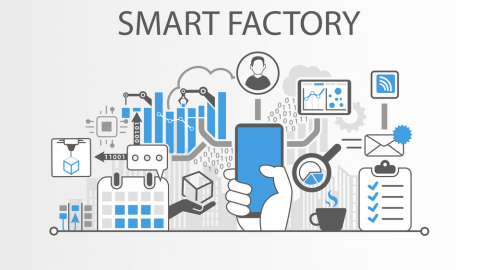
A smart factory can be operated remotely via a mobile device
Along with the explosion of the industrial revolution 4.0, the way manufacturers access to lean manufacturing (LEAN) is gradually changing. Thanks to the application of 4.0 technology such as Interner of things, Sensor technology or Big data, the application of LEAN becomes much easier than before.
Lean is based on the principle of reducing waste, streamlining processes and improving production efficiency. These principles are almost unchanged even when applied to smart plants. The only difference when applying LEAN here is the management method.
Each smart factory is equipped with a lot of sensors to measure and provide all specifications for operators in real time. As a result, the operator can quickly detect errors and simultaneously evaluate the performance of each device and indicate where the source is causing waste.
With the utility of Internet of things, all the machines in the smart factory can be operated remotely with just one mobile phone. This also helps the operator save a large amount of travel time and expand the operating space for autonomous machines.
Mobile phones and operating devices are also an important factor in reducing the error rate. High-resolution cameras can provide realistic images of defects, while modeling them with coating scanning technology and augmented reality to find the cause of the error.
Besides, operators can also use mobile devices to record video (the entire process from when the error occurred until resolution) as a visual guide for future operators. This is the shortest way to help workers realize faster and more comprehensively about the problem, avoid repeating the errors that occurred and better deal with them.
Mobile devices in smart factories not only play an operating role but also an extremely versatile manual. The first thing to mention is the right to operate. A device, although connected to the entire system, only provides the user with the right to operate for a certain stage. This outlines the responsibility of each person to the stage they are in charge of, and at the same time limits such as unnecessary errors due to operation conflicts. In addition, instruction manuals, sample product comparison images and technical specifications can be searched at any time via a mobile device.
If we talk about the biggest advantage of lean manufacturing in smart factories, it is the ability to self-drive and continually improve itself. Based on LEAN’s principles, it is the plant that will gradually show its problem and the operator’s job is to come up with a solution. The Internet of Things and mobile devices play a role in promoting this coordination so that it takes place sooner and more efficiently.